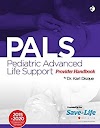Written by authors from one of Asia's premier ophthalmology institutes the purpose of this atlas is to provide ophthalmologists and other physicians concerned with eye diseases with a carefully selected collection of quality illustrations that review the spectrum of diseases commonly seen in Neuro-ophthalmic practice.
In this last two decades, there have been intense revolutionary changes in the field of imaging and their applications in various aspects of ophthalmology and particularly in neuro-ophthalmology. This book aims to cover the important aspects of computed tomography (CT) and magnetic resonance imaging (MRI) in the diagnosis of various ophthalmic diseases. The atlas consists of extensive collection of CT and MRI images of various ocular, orbital and neuro-ophthalmic disorders. It also deals with most of the neurological diseases with ophthalmic manifestations with vivid portrayal of their imaging characteristics. All the clinical images used in this atlas belong to patients seen only in our organization (Sankara Nethralaya: A Unit of Medical Research Foundation), which is a tertiary referral ophthalmic institution.
- This book aims to cover important aspects of Computed Tomography (CT) and Magnetic Resonance Imaging (MRI) in the diagnosis of various ophthalmic diseases.
- Extensive collection of CT and MRI images of various ocular, orbital and neuro-ophthalmic disorders.
- Deals with most of the neurological diseases with ophthalmic manifestations with vivid portrayal of their imaging characteristics.
- Covers recent advances in imaging, particularly in the techniques and hardware of magnetic resonance imaging (MRI).
- Deals with imaging aspects of Ophthalmology.
- Includes enormous data and collection of images of various common relatively rare clinical conditions.
- Diseases are explained step-by-step by its Diagnostic Techniques, Clinical Features, Radiological Features, Differential Diagnosis, MR Imaging and Neuroimaging, etc. for better understanding.
- A good guide to all practicing ophthalmologists, neurologists and radiologists in their day-to-day practice.
- Great source of reference for undergraduates, ophthalmology, radiology and neurology postgraduates.
Table of contents :
Section 1: Physical Principles of Computed Tomography and Magnetic Resonance Imaging
1. Physical Principles of Computed Tomography and Magnetic Resonance Imaging
Section 2: The Eye
2. Imaging Anatomy of the Eye
3. Congenital Anomalies of the Globe
4. Inflammatory Lesions of the Eye
5. Intraocular Neoplasms
6. Leukocoria: Lesions Simulating Retinoblastoma
7. Detachment of Retina, Choroid and Vitreous
8. Intraocular Calcification
9. Ocular Trauma
10. Postoperative Evaluation of Eye and Orbit
Section 3: Disorders of Orbit
11. Imaging Anatomy of the Orbit
12. Congenital Lesions of the Orbit
13. Infective Lesions
14. Inflammatory Lesions
15. Vascular Lesions of the Orbit
16. Pediatric Malignant Orbital Tumors
17. Lymph proliferative Disorders
18. Histolytic Lesions
19. Lacrimal Gland Lesions
20. Neurogenic Tumors
21. Fibrous Lesions
22. Secondary Orbital Tumors and Paraorbital Lesions
23. Thyroid Eye Disease
24. Orbital Metastases
25. Orbital Trauma
Section 4: Visual Pathway Lesions: Optic Nerve Disorders
26. Anatomy and Clinical Features
27. Congenital Optic Nerve Anomalies
28. Papilledema
29. Optic Neuritis
30. Infiltrative Optic Neuropathy
31. Traumatic Optic Neuropathy
32. Radiation Optic Neuropathy
Section 5: Disorders of Chiasm
33. Anatomy and Clinical Features
34. Chiasmal Disorders in Pediatric: Young Adult
35. Chiasmal Disorders in Middle Age: Elderly
36. Chiasmal Disorders: No Age Predilection
Section 6: Retrochiasmal Visual Pathway Lesions
37. Anatomy and Clinical Features of the Retrochiasmal Visual Pathway
38. Congenital Lesions
39. Infections
40. Hydrocephalus
41. Vascular Lesions
42. Intracranial Neoplasms
Section 7: Efferent Pathway Lesions
43. Ocular Motility Disorders
44. Chronic Progressive External Ophthalmoplegia
45. Internuclear Ophthalmoplegia
46. Supranuclear: Gaze Palsy
47. Olivopontocerebellar Atrophy
48. Nystagmus
Section 8: Demyelination
49. Primary Demyelination
50. Secondary Demyelination
Section 9: Phacomatosis
51. Neurofibromatosis
52. Sturge-Weber Syndrome
53. Tuberous Sclerosis
54. Von Hippel-Lindau Disease
55. Wyburn-Mason Syndrome
Section 10: Applications of Interventional Radiology in Ophthalmology
56. Neurovascular Diseases in Ophthalmology: Diagnosis and Management
Index





















